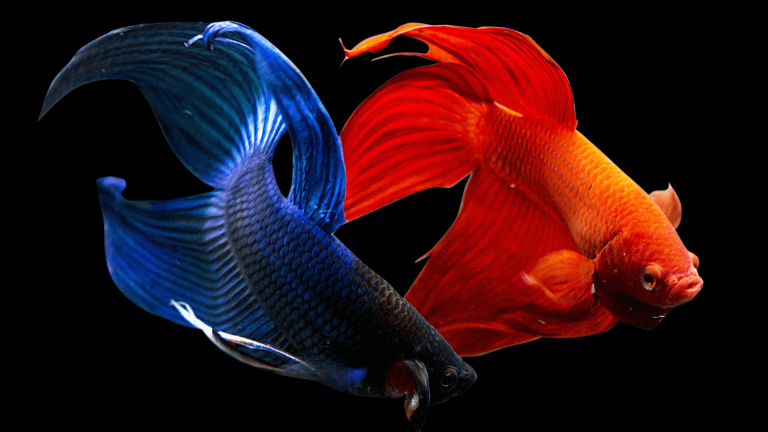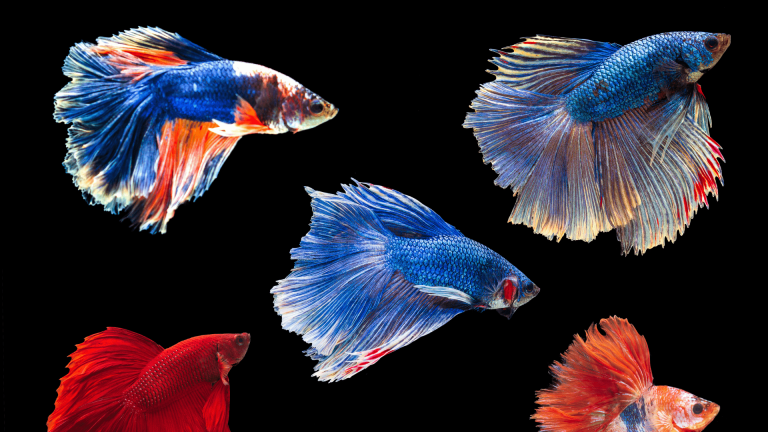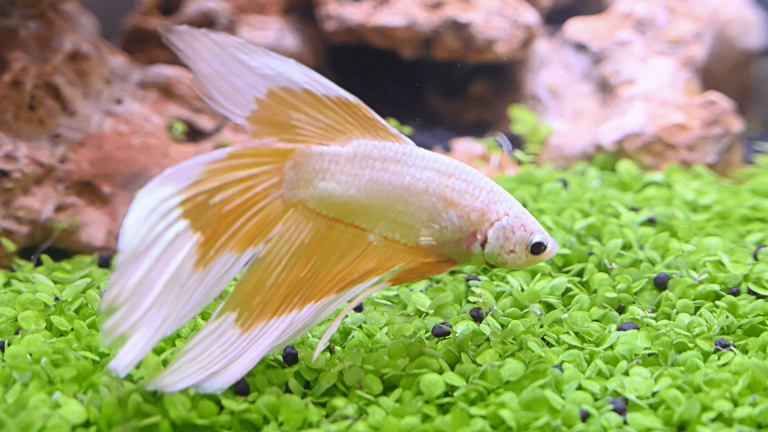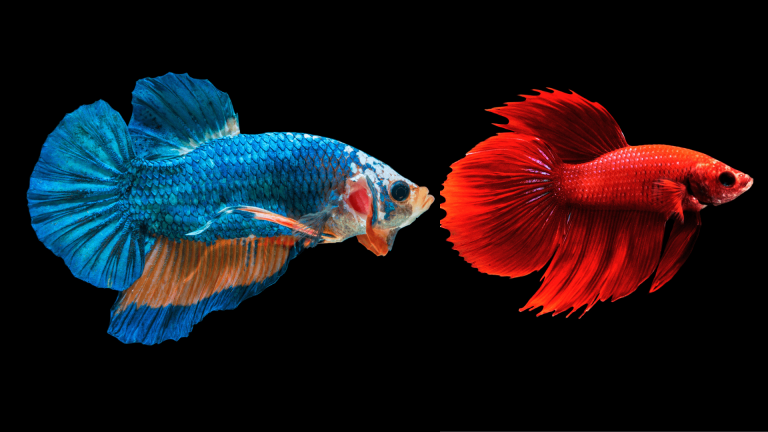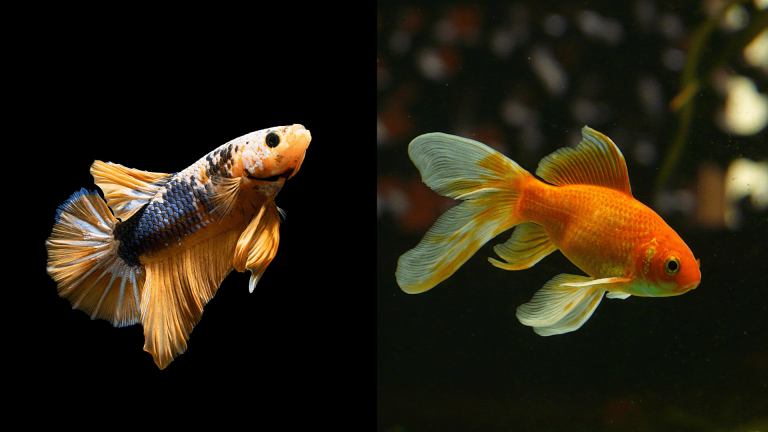How to Care for a Betta Fish: A Complete Guide
Discover the best practices and expert insights on how to care for a Betta Fish, ensuring their health and happiness. Learn about tank setup, feeding, water conditions, and more.
Betta fish are known for their captivating beauty and unique personalities. Proper care is essential to ensure that your betta thrives and lives a happy, healthy life. By following the guidelines outlined in this guide, you can create a suitable and enriching environment for your betta fish.
How to Care for a Betta Fish

Caring for a Betta fish involves several crucial steps to create a suitable and comfortable habitat. Let’s explore each aspect in detail.
Setting Up the Perfect Betta Habitat
Betta fish, also known as Siamese fighting fish, are captivating and vibrant aquatic creatures that make wonderful pets. With their stunning colors and graceful movements, bettas are a popular choice for both experienced and novice fishkeepers. Setting up the perfect betta habitat is crucial to ensuring the well-being and longevity of your beloved fish. In this section, we’ll guide you through the essential steps to create an ideal environment for your betta.
Choosing the Right Aquarium
Selecting the appropriate aquarium is the first step in creating a perfect habitat for your betta. Opt for a tank with a minimum capacity of 5 gallons to provide ample space for swimming and exploration. A larger tank offers more stable water conditions and reduces the frequency of water changes. Ensure the tank has a secure lid to prevent bettas from jumping out.
Adding Substrate and Decorations
The substrate and decorations play a significant role in mimicking your betta’s natural environment. Choose a fine-grain substrate, such as sand or gravel, resembling the riverbeds where bettas thrive. Incorporate ornaments, caves, and plants to create hiding spots and a visually stimulating setting. Smooth-edged decorations prevent fin tears and injuries.
Providing Proper Filtration and Heating
Maintaining water quality is essential for your betta’s health. Install a gentle filter to remove debris and ensure proper oxygenation. Betta fish are tropical species, so a reliable heater is crucial to maintain a consistent water temperature between 78-80°F (25-27°C).
Creating a Comfortable Lighting Environment
Bettas thrive with a natural light cycle. Use a low-intensity aquarium light on a timer to establish regular day and night periods. Avoid exposing the tank to direct sunlight, as it can lead to temperature fluctuations and unwanted algae growth.
Maintaining Water Parameters
Regularly test water parameters, including ammonia, nitrite, nitrate levels, and pH. Aim for a pH range between 6.5 and 7.5 to provide a suitable environment for your betta. Make necessary adjustments to ensure the water remains safe and conducive to your betta’s well-being.
Acclimating Your Betta to the New Habitat
When introducing your betta to the new habitat, practice proper acclimation to minimize stress. Float the betta in a plastic bag on the water’s surface for about 15-20 minutes. This allows the temperature to equalize and prevents shock. Slowly add small amounts of the tank water to the bag to help your betta adjust before releasing it into the aquarium.
By carefully considering these factors and creating an environment that mirrors their natural habitat, you can set up the perfect betta habitat and provide your fish with a comfortable and thriving home.
Water Quality and Maintenance
Maintaining optimal water quality is a cornerstone of successful betta fish care. Clean and well-balanced water not only ensures your betta’s health but also promotes their overall well-being. In this section, we’ll explore the importance of monitoring water parameters, performing regular water changes, and implementing proper water conditioning techniques.
Monitoring Water Temperature and pH Levels
Consistently monitoring the water temperature and pH levels is essential for your betta’s comfort and health. Use a reliable aquarium thermometer to ensure the water temperature remains within the recommended range of 78-80°F (25-27°C). Fluctuations outside this range can cause stress and compromise your betta’s immune system.
Similarly, keeping track of the pH levels is crucial. Betta fish thrive in slightly acidic to neutral water with a pH range of 6.5 to 7.5. Use a pH test kit to regularly measure the pH and make necessary adjustments to maintain a stable and suitable environment.
Performing Regular Water Changes
Regular water changes are vital to remove accumulated waste, excess nutrients, and other pollutants from the tank. Aim to replace approximately 25-30% of the water every week. This practice helps maintain optimal water conditions and reduces the risk of waterborne illnesses.
When performing a water change, use a siphon to vacuum the substrate and remove debris that may settle on the bottom of the tank. Gently agitate the substrate to prevent the buildup of waste in inaccessible areas.
Conditioning and Treating the Water
Before adding tap water to your betta’s tank, it’s essential to treat it to ensure it’s safe and suitable for your fish. Tap water often contains chlorine and chloramine, which are harmful to bettas. Use a high-quality water dechlorinator to neutralize these chemicals and make the water safe for your fish.
In addition to dechlorination, consider using a water conditioner that adds essential minerals and vitamins to the water. These additives contribute to your betta’s health and well-being and help reduce stress.
Maintaining Ammonia and Nitrite Levels
Ammonia and nitrite are toxic substances that can quickly accumulate in the tank, posing a serious threat to your betta’s health. These compounds are byproducts of fish waste and uneaten food. To prevent ammonia and nitrite buildup, perform regular water changes and avoid overfeeding.
In a properly cycled and established aquarium, beneficial bacteria will convert ammonia into nitrite and then into nitrate, which is less harmful to fish. Regular water changes help keep nitrate levels in check and prevent them from reaching dangerous concentrations.

Feeding and Nutrition
Proper feeding and nutrition play a vital role in the health and well-being of your betta fish. Providing a balanced and varied diet ensures that your betta receives the essential nutrients they need to thrive. In this section, we’ll explore how to select the right betta food, establish a feeding schedule, and avoid common feeding pitfalls.
Selecting High-Quality Betta Food
Choosing high-quality betta food is the foundation of a nutritious diet. Look for commercially available betta pellets that contain a balanced mix of protein, vitamins, and minerals. The primary ingredient should be a quality protein source, such as fish meal or shrimp.
Additionally, consider supplementing your betta’s diet with frozen or live foods. Bloodworms, brine shrimp, and daphnia are excellent choices that provide essential nutrients and offer variety.
Establishing a Feeding Schedule
Creating a consistent feeding schedule is essential for your betta’s well-being. Feed your betta small, manageable portions 2-3 times a day. Overfeeding can lead to obesity, digestive issues, and poor water quality.
To avoid overfeeding, only offer an amount of food that your betta can consume within 2 minutes. Remove any uneaten food promptly to prevent it from decomposing and affecting the tank’s water quality.
Avoiding Overfeeding and Health Issues
Overfeeding is a common mistake that can have serious consequences for your betta’s health. Uneaten food produces excess waste and contributes to poor water conditions. Additionally, overfeeding can lead to obesity, which increases the risk of various health problems.
Pay attention to your betta’s appetite and adjust the portion size accordingly. It’s better to slightly underfeed than to overfeed. Monitor your betta’s appearance and behavior for signs of overfeeding, such as a distended belly or reduced activity.
Providing Variety and Enrichment
While betta pellets provide essential nutrients, offering a varied diet is beneficial for your betta’s overall health. Rotate between different types of high-quality pellets and supplement with frozen or live foods. This variety ensures your betta receives a broad spectrum of nutrients.
Introducing variety also stimulates your betta’s natural hunting instincts and provides mental enrichment. Alternate between different food types throughout the week to keep your betta engaged and excited during feeding times.
Enrichment and Stimulation
Creating an enriching and stimulating environment is essential for the well-being and mental health of your betta fish. Providing opportunities for natural behaviors, exploration, and mental engagement contributes to a happy and thriving betta. In this section, we’ll explore how to enhance your betta’s habitat and promote their overall enrichment.
Providing Hiding Places and Resting Spots
Betta fish, while active swimmers, also appreciate safe spaces to hide and rest. Incorporate a variety of decorations, plants, and caves into the aquarium to create hiding spots and resting areas. These spaces offer your betta a sense of security and help alleviate stress.
Caves and tunnels provide excellent hiding places, allowing your betta to retreat when they desire privacy or feel threatened. Dense vegetation, such as floating plants or tall leafy stems, also offers shelter and encourages natural behavior.
Adding Live Plants for a Natural Environment
Live plants not only enhance the aesthetic appeal of your betta’s habitat but also serve functional purposes. Plants offer places for your betta to explore, rest, and even build bubble nests. Additionally, live plants contribute to oxygenation, help absorb excess nutrients, and create a more natural and balanced ecosystem.
Choose aquatic plants that are compatible with betta fish and the aquarium’s conditions. Java Fern, Anubias, Marimo Moss Balls, and Amazon Sword are popular options that provide both visual interest and enrichment.
Introducing Safe Tankmates
While bettas are known for their solitary nature, introducing compatible tankmates can provide social interaction and enrichment. Carefully select peaceful species that won’t harass or outcompete your betta. Snails, shrimp, and certain small fish can coexist harmoniously, contributing to a diverse and dynamic ecosystem.
Before adding tankmates, research their compatibility with bettas and ensure that your aquarium’s size and conditions are suitable for all inhabitants. Regularly monitor interactions to ensure a harmonious environment and prevent any conflicts.
Engaging in Interactive Play
Engaging with your betta through interactive play can provide mental stimulation and strengthen the bond between you and your fish. Gently move your finger outside the tank to encourage your betta to follow and interact. Some bettas even learn to perform tricks, such as swimming through a hoop or following your finger’s movements.
Providing a small mirror near the tank can also elicit a reaction from your betta. Be mindful not to overstimulate your fish or induce stress during playtime.
Healthcare and Disease Prevention

Ensuring the health and well-being of your betta fish is a top priority for any responsible fish owner. While bettas are hardy and resilient, proper healthcare and disease prevention practices are essential to keep them thriving. In this section, we’ll delve into recognizing signs of a healthy betta, common betta health issues, and strategies for disease prevention.
Recognizing Signs of a Healthy Betta
A healthy betta exhibits certain characteristics that indicate their well-being. These signs include vibrant and well-defined colors, erect and undamaged fins, active swimming behavior, and a healthy appetite. A betta with a clear and undistorted body shape, free from visible growths or abnormalities, is also indicative of good health.
Regular observation of your betta’s appearance and behavior allows you to quickly identify any deviations from their usual state, enabling you to address potential health concerns promptly.
Common Betta Health Issues and Remedies
Despite your best efforts, bettas can still encounter health issues. Understanding and recognizing common problems is crucial for early intervention. Some common betta health issues include:
- Fin Rot: Characterized by ragged or frayed fins, fin rot is often caused by poor water conditions or stress. Increase water changes and maintain optimal water parameters. Aquarium salt or specialized medications can aid in recovery.
- Ich (White Spot Disease): This parasitic infection causes white spots on the betta’s body and fins. Quarantine affected fish and treat the tank with aquarium salt or ich medication according to instructions.
- Fungal Infections: Fungal infections appear as cotton-like growths on the betta’s body or fins. Isolate the infected betta, perform water changes, and use antifungal medication.
- Parasites: Internal or external parasites can lead to symptoms like lethargy, loss of appetite, or bloated appearance. Consult a veterinarian for accurate diagnosis and treatment.
- Swim Bladder Disorder: Betta fish with swim bladder disorder may struggle to maintain buoyancy or float on their side. Feed a high-fiber diet, avoid overfeeding, and consider using a specialized betta pellet designed to alleviate swim bladder issues.
Quarantine Procedures for New Additions
Introducing new fish, plants, or decorations to your betta’s habitat can potentially introduce diseases. Quarantine any new additions in a separate tank for a few weeks before introducing them to the main tank. This isolation period allows you to monitor for signs of illness and address them without affecting the health of your existing bettas.

Handling and Interaction
Interacting with your betta fish can be a rewarding and enjoyable experience, but it’s important to handle them with care and sensitivity. Betta fish are delicate creatures, and proper handling techniques are crucial to minimize stress and ensure their well-being. In this section, we’ll explore gentle approaches to tank cleaning, limiting direct contact, and fostering positive interaction with your betta.
Minimizing Stress During Tank Maintenance
Performing tank maintenance is essential for a clean and healthy environment, but it can also be a source of stress for your betta. To minimize stress during cleaning and maintenance:
- Plan Ahead: Prepare all the necessary tools and supplies before you start. This reduces the time your betta spends in a disturbed environment.
- Work Slowly: Move deliberately and avoid sudden movements that can startle your betta. Slow and steady actions are less likely to cause stress.
- Use a Dim Light: If possible, dim the aquarium light during maintenance. This reduces the impact of changes in light intensity, which can stress your betta.
- Avoid Drastic Changes: While performing water changes, match the temperature and water chemistry as closely as possible to the existing conditions. Rapid changes can stress your betta.
Gentle Approaches to Tank Cleaning
When cleaning the tank, use a soft aquarium brush or cloth to clean decorations and glass surfaces. Avoid using abrasive materials or harsh chemicals that can harm your betta or disrupt the water balance. Gently vacuum the substrate using a siphon to remove debris and waste. Regular maintenance helps maintain water quality and provides a clean and comfortable environment for your betta.
Limiting Direct Contact and Handling
Betta fish are best observed and admired from outside the tank, as direct contact can cause stress and potential harm. While bettas may recognize their owners and even follow their movements, they are sensitive to touch and can be injured easily. If you need to handle your betta for tasks like acclimation or transferring, follow these guidelines:
- Wet Your Hands: Wet your hands before touching your betta to prevent removing their protective slime coat. This coat helps protect bettas from infections and maintains their health.
- Use a Container: If you need to move your betta, use a clean container with aquarium water to gently scoop them up. Avoid using nets, which can damage their delicate fins.
- Limit Handling: Only handle your betta when necessary. Excessive handling can cause stress and disrupt their routine.
Fostering Positive Interaction
While bettas may not enjoy physical interaction like some other pets, you can still create a bond through positive reinforcement and engagement. Train your betta to recognize you as a source of food by feeding them treats from your fingers. Gently tap the water’s surface before feeding to signal mealtime.
10 Most Beautiful Betta Fish in the World: How to Care for a Betta Fish
Frequently Asked Questions (FAQs) About How to Care for a Betta Fish
Can I keep multiple betta fish together?
Betta fish are known for their territorial nature and aggression towards other bettas. It’s best to keep them in separate tanks to prevent fighting and stress.
How often should I clean the betta tank?
Perform a partial water change of 25-30% every week to maintain water quality. Clean the tank decorations and substrate as needed to remove debris.
What should I do if my betta appears sick?
If your betta shows signs of illness, such as lethargy, loss of appetite, or unusual spots on its body, isolate it in a quarantine tank and seek advice from a fish veterinarian.
Can bettas jump out of the tank?
Yes, bettas are skilled jumpers. Always provide a secure lid on the tank to prevent them from leaping out and injuring themselves.
How long do betta fish live?
With proper care, betta fish can live for an average of 2-3 years. Some well-cared-for bettas have been known to live up to 5 years or more.
Conclusion
Caring for a betta fish is a rewarding experience that requires attention, dedication, and knowledge. By providing a suitable environment, balanced nutrition, and proper care, you can ensure that your betta fish thrives and brings joy to your life for years to come.

